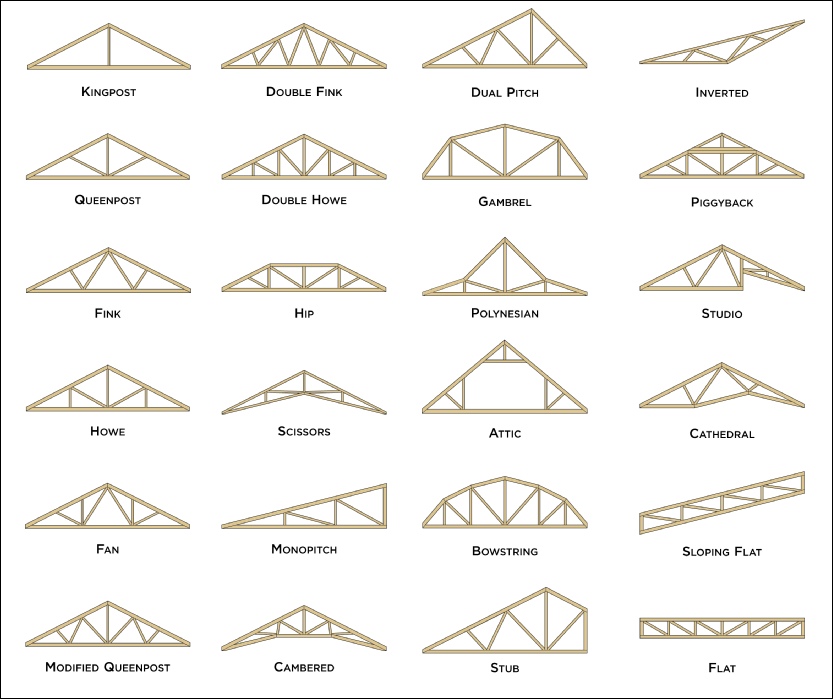
Most Common Types of Roof Trusses Zeeland Lumber & Supply
The pitch, or slope, is the incline of the roof expressed as a fraction describing the rise over the run. The run or the base number is 12 inches. The rise will be the elevation change over the 12 inches. For example, a slope of 6/12 means for every 12 inches of horizontal distance, the slope of the roof will rise 6 inches vertically.

Installing the Mono Trusses [Flat Roof Trusses] YouTube
Typically used for a flat (rubber) roof. I think you're talking about a "parallel chord truss", where both the TC and BC would have the same pitch. They are for all practical purposes a rafter. One big drawback to using them is that you would have to use a ridge beam. With a clear span up around 30' or so, it would be one heck of a beam.
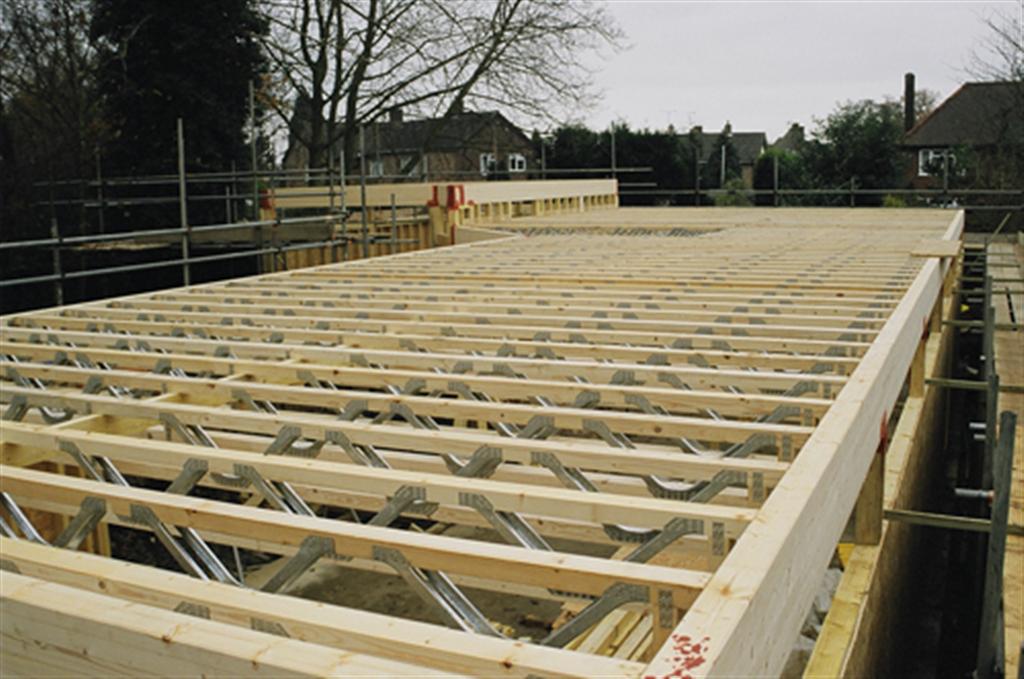
Roof Trusses Gallery Holden Timber Engineering
The parallel chord or flat truss gets its name from having parallel top and bottom chords. This type is often used for floor construction, but can also be used in roof applications. Standard Roof Truss Configurations Parallel Chord 4x2 Floor Truss with Chase 2x4 Floor or Roof Truss (can design with a chase as well) Truss Configurations:
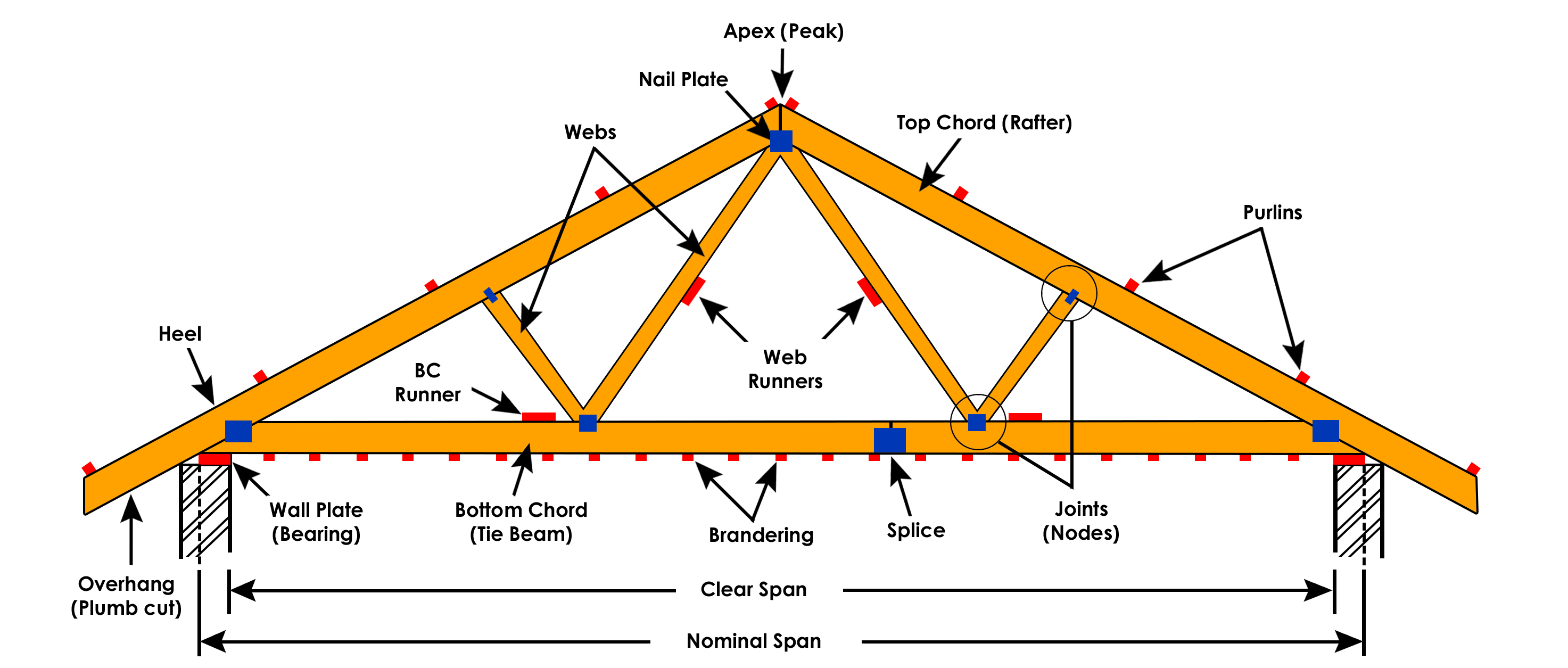
Roof Truss Types, Components, Advantages
For flat trusses, a minimum depth-to-span ratio between 1:8 and 1:10 is recommended, the deeper trusses being preferred for the longer spans. Roofs should have a minimum slope of ¼ in. per ft for proper drainage, although steeper slopes are often desirable.
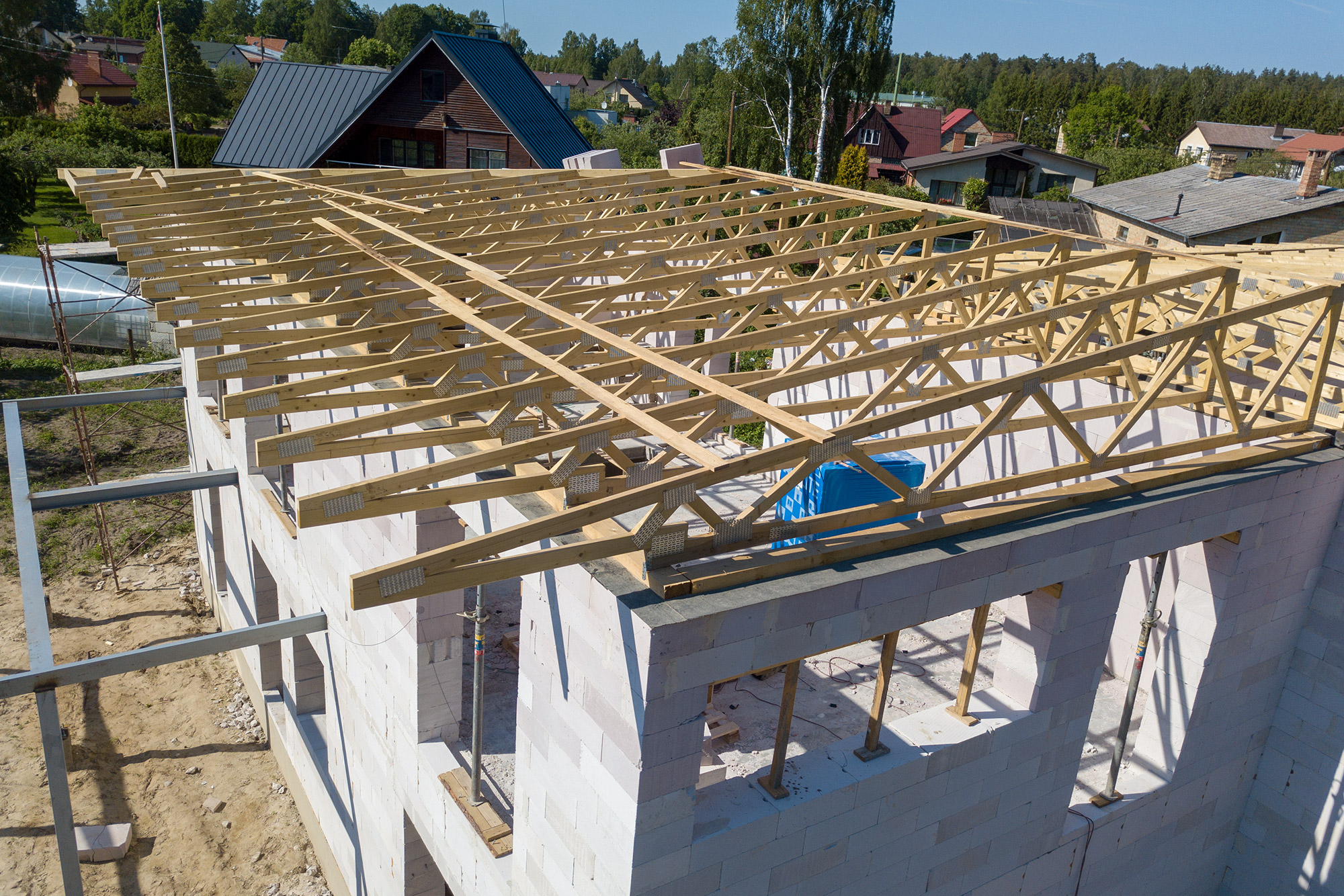
Timber trusses for two storeys private house Freimans
Scope. In high-wind zones, construct low-slope ("flat") insulated roof assemblies that resist the wind pressures that can pull off membrane roof coverings during high-wind events such as hurricanes. Install the roof decking in accordance with IBHS Fortified Home sheathing nailing pattern recommendations. Seal the roof deck sheathing by.

Common Roof Truss Sizes Images and Photos finder
Wood Roof Trusses are Environmentally Compatible. Get more Quality, Flexibility and Labor Savings using. Flat Truss (Warren Configuration) Sloping Top Chord (Howe Configuration) Floor Truss (System 42 - Modified Warren Configuration) Scissors Mono Mono Room-In-Attic Three Piece Raised Center Bay-- Lengths 50' to 100'+

Image from
A truss is a structure that consists of a series of triangles connected together. The triangles are arranged in such a way that the forces acting on them are transferred to the ground in a safe and efficient manner. Trusses are used in a variety of applications, including bridges, roofs, and towers. Truss - Scissors DWG (FT) SVG JPG 3DM (FT)
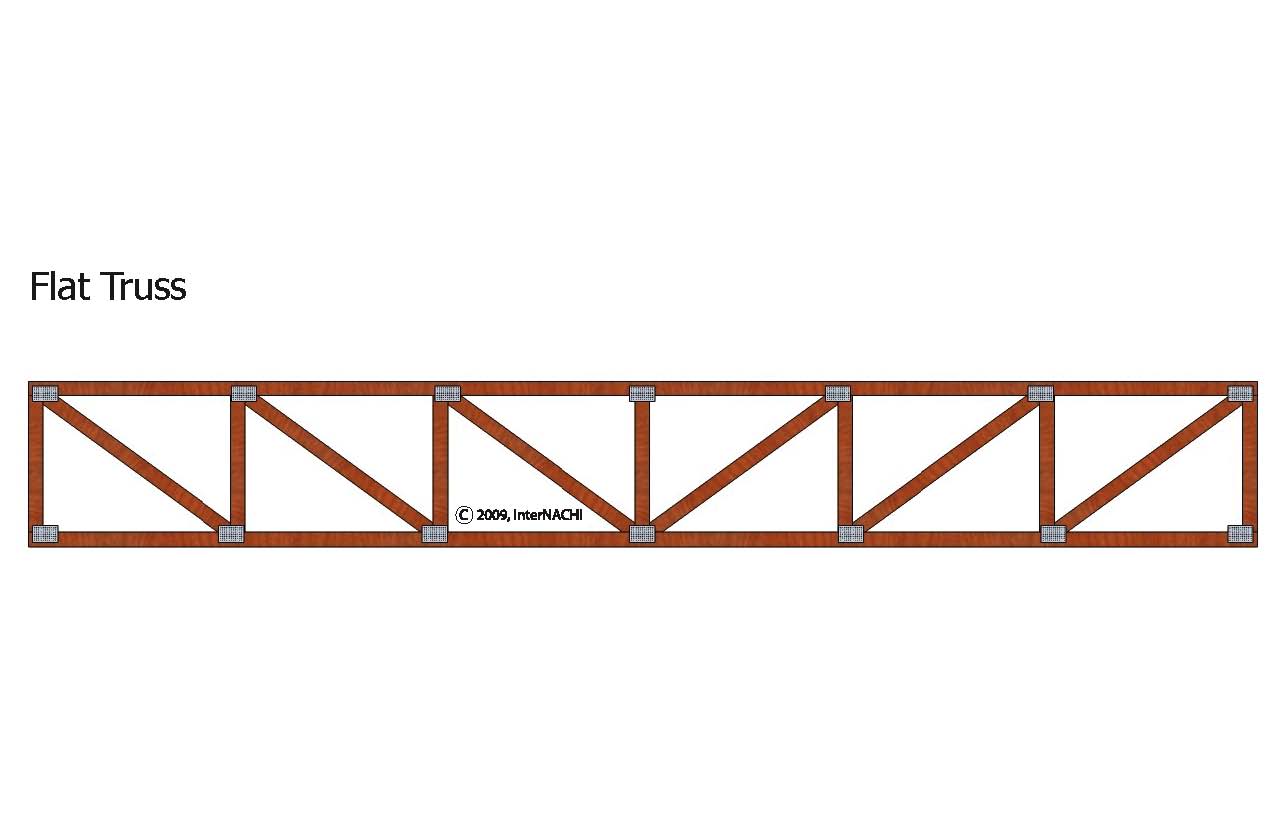
Sloping Flat Roof Truss Design
You can use it either as a rafter length calculator, and get the dimensions of your trusses estimated or as a roof truss count calculator, which will also allow you to estimate the roof truss costs and even include the price of installation. To start your calculations, you need to choose from the two options mentioned above.
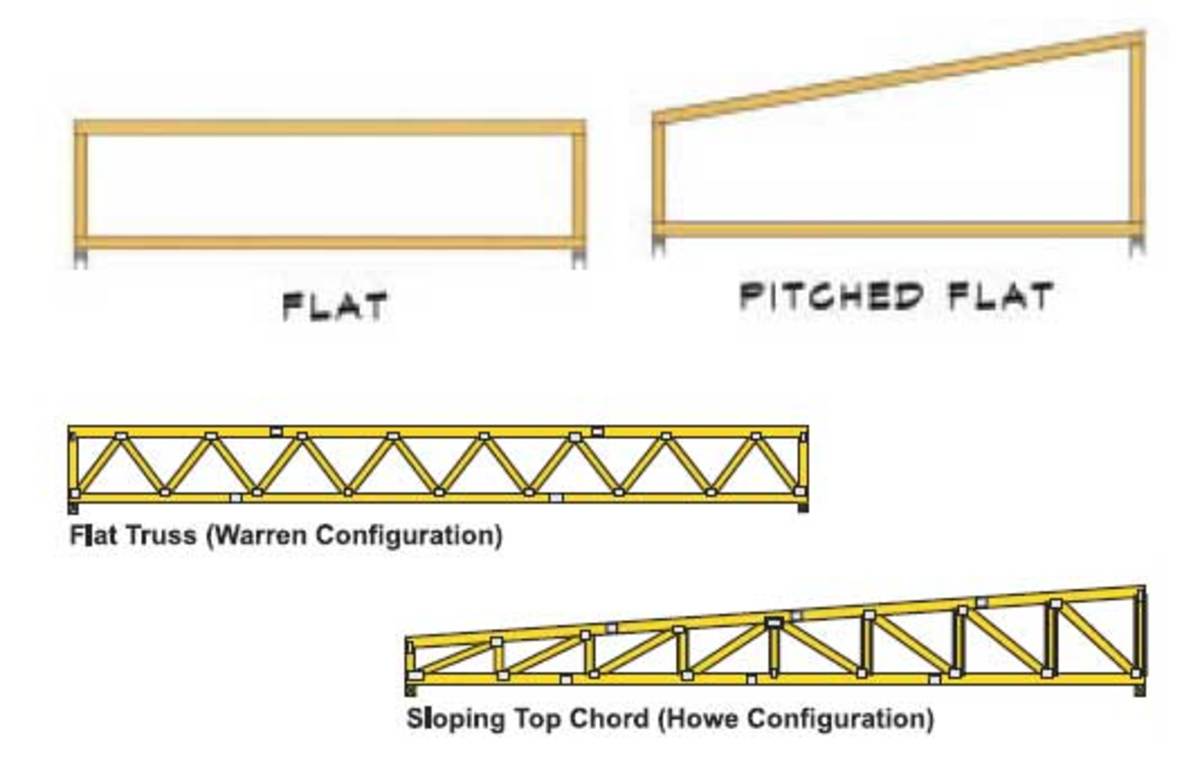
The Flexible Roof Truss And 7 Common Truss Shapes HubPages
Flat Roofs with a slight slope can be achieved using Trus Joist® TJI® joists and solid section products. It is the responsibility of the designer of record to address items like ponding, snow/drift loads, lateral loads, wind loads, bracing, ventilation, and insulation when adding a slope to roofs.

Flat Roof Trusses Today the roof trusses for Flat roof, Roof
1. Studio-Two Bearing Points Truss 2. Studio-Three Bearing Points Used on larger trusses and for creating a pitched ceiling or an extra vertical space. 3. Coffer/Tray Truss A pitch truss with a sloping (or non-sloping) vertical interior ceiling detail.

Резултат с изображение за sloping flat/roof/truss/design Steel trusses, Roof trusses, Roof
Roof-Floor Truss manual 7/31/08 10:43 AM Page 6. TM ON WWW.MII.COM 5. trusses • Slope for drainage, as required • Cantilever span controlled by lumber size, grade and deflection limitations Floor Cantilevered Perpendicular to Floor Truss Span Section AA - Floor Truss Jacks
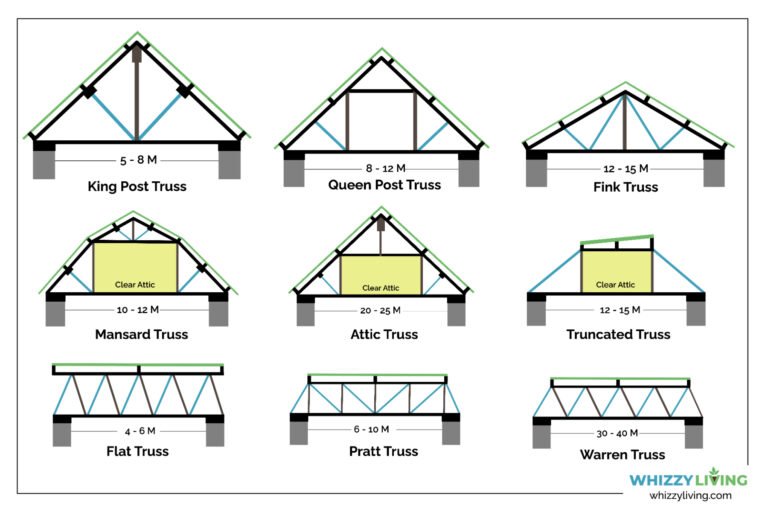
20 Types of Roof Trusses (Based on Design & Strength)
The flat truss is a structural system commonly used in engineering projects like bridge and building structures. It's characterized by a series of triangles that support the loads of a structure ( wind, snow, dead, live load ). Let's have a look at a visualization of the flat truss and its members .⬇️⬇️. Flat truss and its members.

Roof Truss Designs Building roof, Roof truss design, Roof structure
A flat roof truss is also known simply as a flat truss and is not completely flat, but rather slightly sloped in order to allow water to run off of the roof. In order to make this correctly, you will have to work out exactly what you need to do with your truss in order to create a flat roof. Step 1 - Draw Out Your Plans

Flat Truss Roof ceiling, Roof trusses, Flat roof
Step #1: In order to produce the right roof design, you'd need to input 6 roof measurements. Length of the truss in inches. Height of the truss in inches. Width of the beams in inches. Number of racks. Overhang length in inches. Rafter Birdsmouth Plumb in inches. Step #2: Click 'Calculate'.
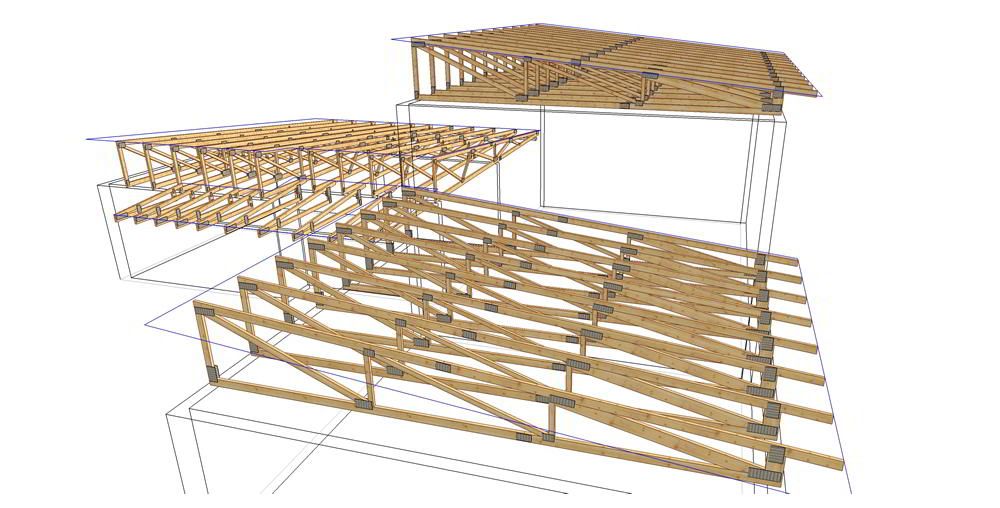
Sloping Roof Trusses
Sqrt (53) = 7.28 ' - this is the "rafter length" of your truss including the roof overhang. Note: multiply 0.28' x 12 (inches per foot) to convert back from decimal feet to feet and inches: your rafter length is 7' 3.4". Watch out: with a horizontal run of 7' and a rafter length of 7' 3.4" your roof is nearly flat.
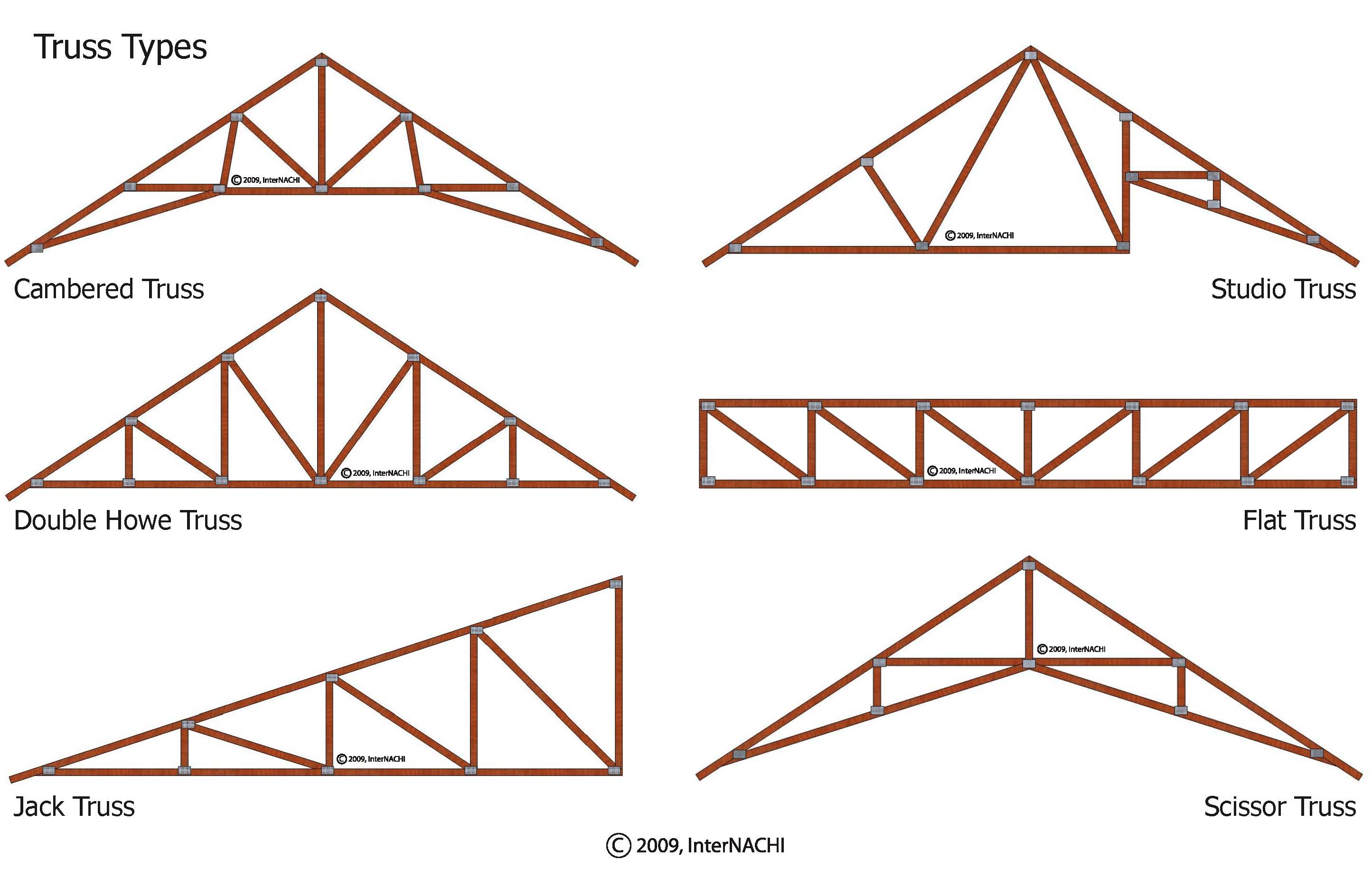
Truss Types Inspection Gallery InterNACHI®
L1 Flat roof type - C L For flat truss, L1/L 0.50 When a hip truss in a hip-end system has a slope ≥2/12, it is not considered to be part of a flat roof and hence flat roof factor does not apply even when L1/L≥0.5. This is reasonable because the hip-end system is sloped enough to allow for proper drainage of water.